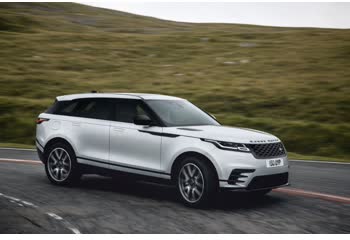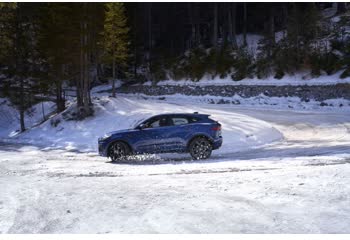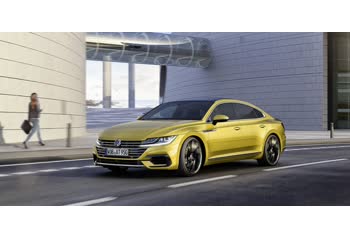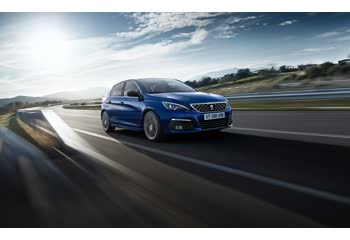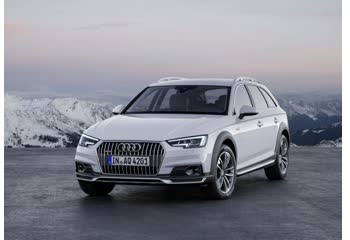مواصفات لاند روفر رانج روفر فيلار رانج روفر فيلار 2017 - D 240 2.0 (240 Hp) AWD Automatic


نظرة عامة
كم سعة محرك لاند روفر رانج روفر فيلار 2017؟
سعة محرك لاند روفر رانج روفر فيلار 2017 هي 1999 سي سي.
لاند روفر رانج روفر فيلار 2017 كم حصان؟
قوة محرك لاند روفر رانج روفر فيلار 2017 تبلغ 240 Hp @ 4000 rpm..
ما هو محرك سيارة لاند روفر رانج روفر فيلار 2017؟
محرك لاند روفر رانج روفر فيلار 2017 هو Ingenium / AJ20D4. (انقر لرؤية السيارات الأخرى التي تستخدم نفس المحرك)
كم تستهلك لاند روفر رانج روفر فيلار 2017 من الوقود؟
لاند روفر رانج روفر فيلار 2017 تستهلك 5.8 لتر لكل 100 كم.
عام:
العلامة التجارية
لاند روفر
الموديل
رانج روفر فيلار
الجيل
رانج روفر فيلار
التعديل - المحرك
D 240 2.0 (240 Hp) AWD Automatic
بدأ الانتاج في
2017
انتهى الانتاج في
2020
بنية نظام الحركة
محرك احتراق داخلي
نمط الهيكل
عدد المقاعد
5
عدد الأبواب
5
المحرك:
أنظمة المحرك
Particulate filter
240 حصان عند 4000 دورة في الدقيقة
الاستطاعة لكل لتر
120.1 حصان لكل لتر
500 نيوتن متر عند 1500 دورة في الدقيقة
نوع/اسم المحرك
سعة المحرك
1999 سي سي
عدد الاسطوانات
4
شكل الاسطوانات
Inline
عدد الصمامات لكل اسطوانة
4
نظام حقن الوقود
Diesel Commonrail
تنفس المحرك
Turbocharger, Intercooler
نظام الصمامات
DOHC
حجم زيت المحرك
6.5 لتر
سائل التبريد
11 لتر
أمامي, طولي
قطر الاسطوانة
83 ملم
شوط المكبس
92.4 ملم
15.5
الأداء:
نوع الوقود
Diesel
استهلاك الوقود (economy) - urban
7.2 l/100 km
استهلاك الوقود (economy) - extra urban
5.1 l/100 km
استهلاك الوقود (economy) - combined
5.8 l/100 km
معيار الانبعاثات
Euro 6
التسارع 0 - 100 كم/سا
7.3 ثانية
التسارع 0 - 62 ميل في الساعة
7.3 ثانية
السرعة القصوى
217 كم/سا
نسبة الوزن للاستطاعة
7.7 كغ لكل حصان, 130.4 حصان لكل طن
نسبة الوزن للعزم
3.7 كغ لكل نيوتن متر, 271.6 نيوتن متر لكل طن
التسارع 0 - 60 ميل/سا
6.9 ثانية
النظام الكهربائي:
الحجم والمساحة:
الوزن الاجمالي
1841 كيلوغرام
السعة القصوى للصندوق الخلفي
1731 لتر
السعة الأقل للصندوق الخلفي
673 لتر
سعة خزان الوقود
60 لتر
سعة خزان AdBlue
17 لتر
حمولة المقطورة المسموح بها بدون فرامل
750 كيلوغرام
حمولة المقطورة المسموح بها مع الفرامل (8%)
2500 كيلوغرام
الأبعاد:
زاوية صعود الميل Ramp-over (brakeover) angle
21-23.5°
عمق الخوص في المياه Wading depth
600-650 ملم
الطول
4803 ملم
العرض
2032 ملم
الارتفاع
1665 ملم
قاعدة العجلات
2874 ملم
العرض والمرايا مطوية
2032 ملم
العرض مع المرايا
2145 ملم
المحور الأمامي
1640-1644 ملم
المحور الخلفي
1657-1663 ملم
الارتفاع عن الأرض
213-251 ملم
قطر الالتفاف
11.6 متر
زاوبة الاقتراب
25.93- 28.89°
زاوبة المغادرة
27.3-29.5°
نظام نقل القدرة, التعليق والفرامل:
الاندفاع
All wheel drive (4x4)
نوع صندوق التروس وعدد السرعات
8 gears, automatic transmission
المكابح الأمامية
Ventilated discs
المكابح الخلفية
Ventilated discs
الأنظمة المساعدة
ABS (Anti-lock braking system)
نمط التوجيه
Steering rack and pinion
مساعد التوجيه
Electric Steering
نظام التعليق الأمامي
Double wishbone
نظام التعليق الخلفي
Independent multi-link suspension
